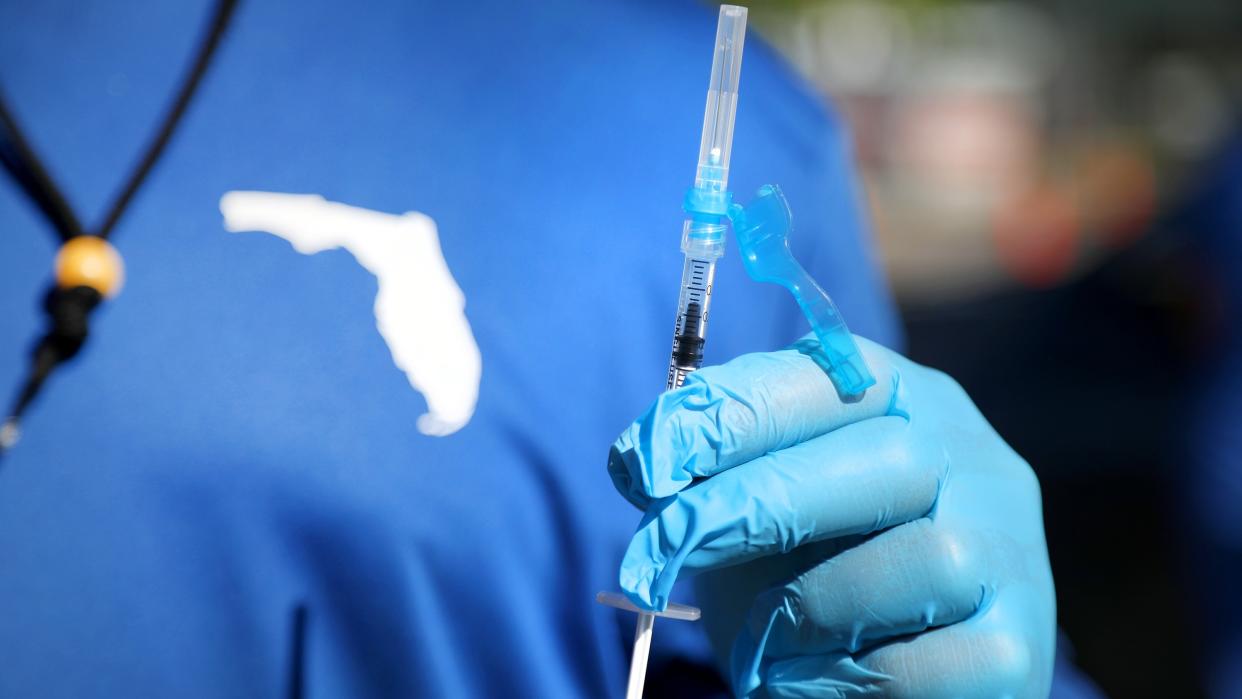Florida sees spike in COVID-19 levels as ‘FLiRT’ variants sweep US

COVID-19 is on the rebound in Florida as new variants spread across the country.
Federal health authorities have scaled back what data is available to track the virus, with no more total case counts and as hospitals are no longer are required to report COVID-19 admissions.
But Florida has seen a surge in virus levels in sewage since early May, according to data from WastewaterSCAN, a project from Emory and Stanford universities that analyzes samples from 13 sites in the state, including three St. Petersburg locations.
All three local facilities have seen upticks of the virus in wastewater. Many people use at-home tests these days and don’t report their results to health officials, so sewage monitoring is one of the few ways experts can gain insight into COVID-19′s continued spread.
“It’s starting to come back,” Michael Teng, a University of South Florida virologist, said of the pathogen.
A swarm of new versions of the virus, nicknamed “FliRT” variants, are circulating in the United States. One called KP.3, which is part of the omicron family, is outpacing the others and is highly contagious. It’s a descendant of JN.1, the variant that dominated last winter.
The 16-hospital BayCare Health System as of Wednesday morning was treating 86 inpatients with COVID-19, the majority of whom were ages 65 or older, according to Chief Quality Officer Laura Arline. By contrast, the health care system’s COVID-19 inpatient count was in the 20s in early May.
The positivity rate for BayCare patients jumped from 2% early last month to roughly 13% as of Monday, according to results from polymerase chain reaction, or PCR, tests.
Years of infections and vaccinations have blunted COVID-19′s worst impacts, reducing the number of severe cases, Teng said. Florida in recent weeks has logged its lowest COVID-19 death counts since March 2020, with weekly fatalities hovering below 30, according to data from the U.S. Centers for Disease Control and Prevention.
As virus levels spike in wastewater, there are simple ways to stay safe and protect others. Teng urged people who are sick to remain home and get a test. When at work, don’t spend too much time in poorly ventilated areas, he said. He also wears a mask while on airplanes.
The Centers for Disease Control and Prevention in March eliminated its recommended five-day isolation period for those who test positive. Now, it says people should stay home and away from others until at least 24 hours have passed since their symptoms improved and they didn’t have a fever (without the use of fever-reducing medication). Once resuming normal activities, individuals should take extra precautions for five days such as wearing a mask.
Florida’s low uptake of newly formulated vaccines, which were rolled out last fall, is concerning, Teng added. Only 9% of Florida adults got at least one 2023-24 COVID-19 shot, according to March estimates from the Centers for Disease Control and Prevention. And roughly a fifth of those 65 and up got the latest jab. The federal agency cautioned that these numbers may be underestimates.
The U.S. Food and Drug Administration earlier this month urged COVID-19 vaccine makers to design this winter’s shots to target one of the FLiRT variants.
FLiRT is a term used by scientists based on the technical names for different mutations. KP.3 accounts for a third of recent infections nationally, according to federal estimates, but another FLiRT variant, LB.1, is catching up.
The variants spread quickly but don’t appear to cause more severe illness compared to other forms of the virus, Arline, of BayCare, said in an email. COVID-19 symptoms remain fever, sore throat, cough, fatigue, congestion, runny nose, headache, muscle aches, a loss of taste or smell, shortness of breath, nausea or vomiting and diarrhea.
At-home tests detect the FLiRT variants, Teng said, and the drug Paxlovid should still be effective. A prior infection with the older JN.1 variant should provide some level of protection, and the same goes for a vaccination using last winter’s formula.

